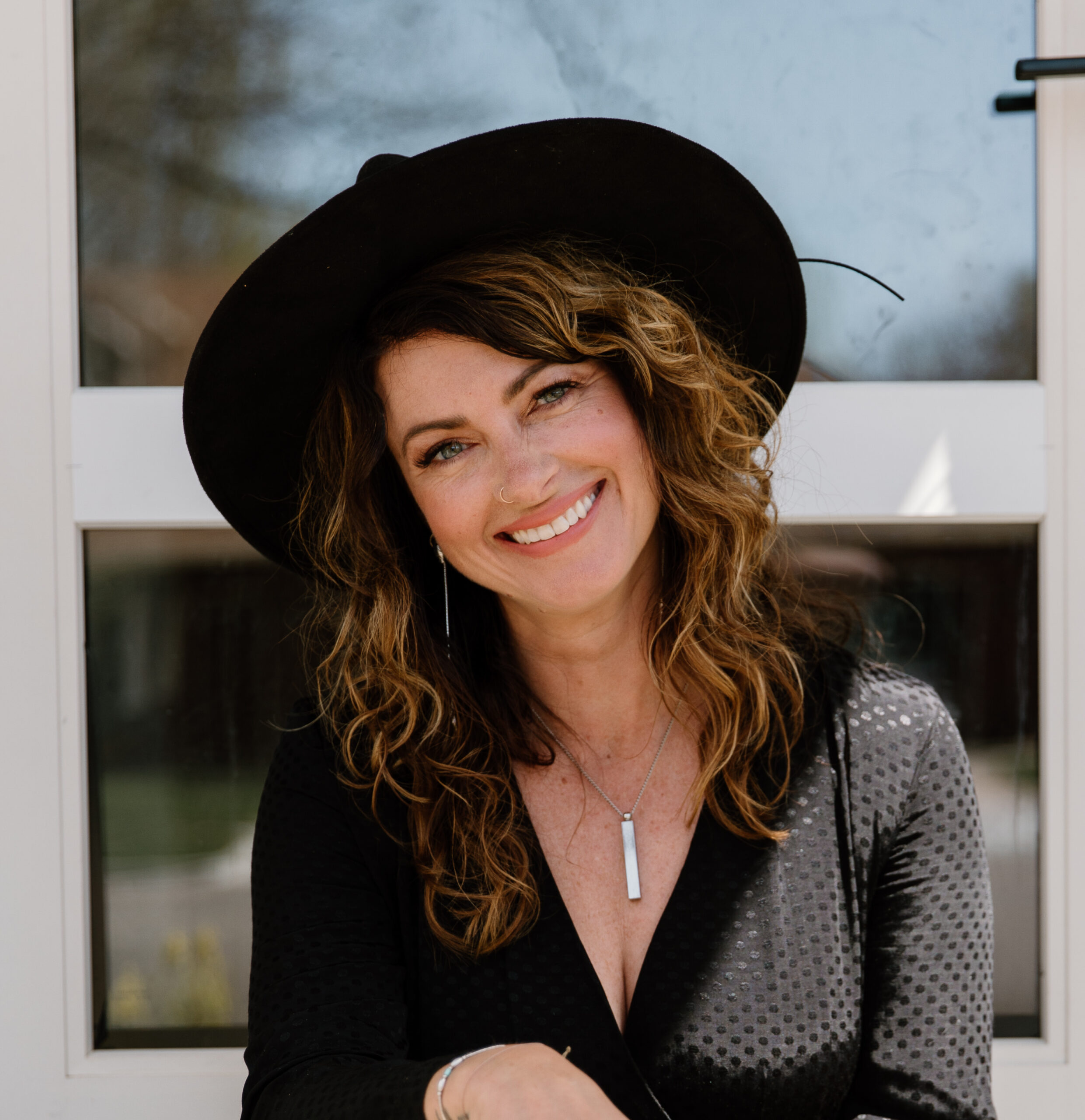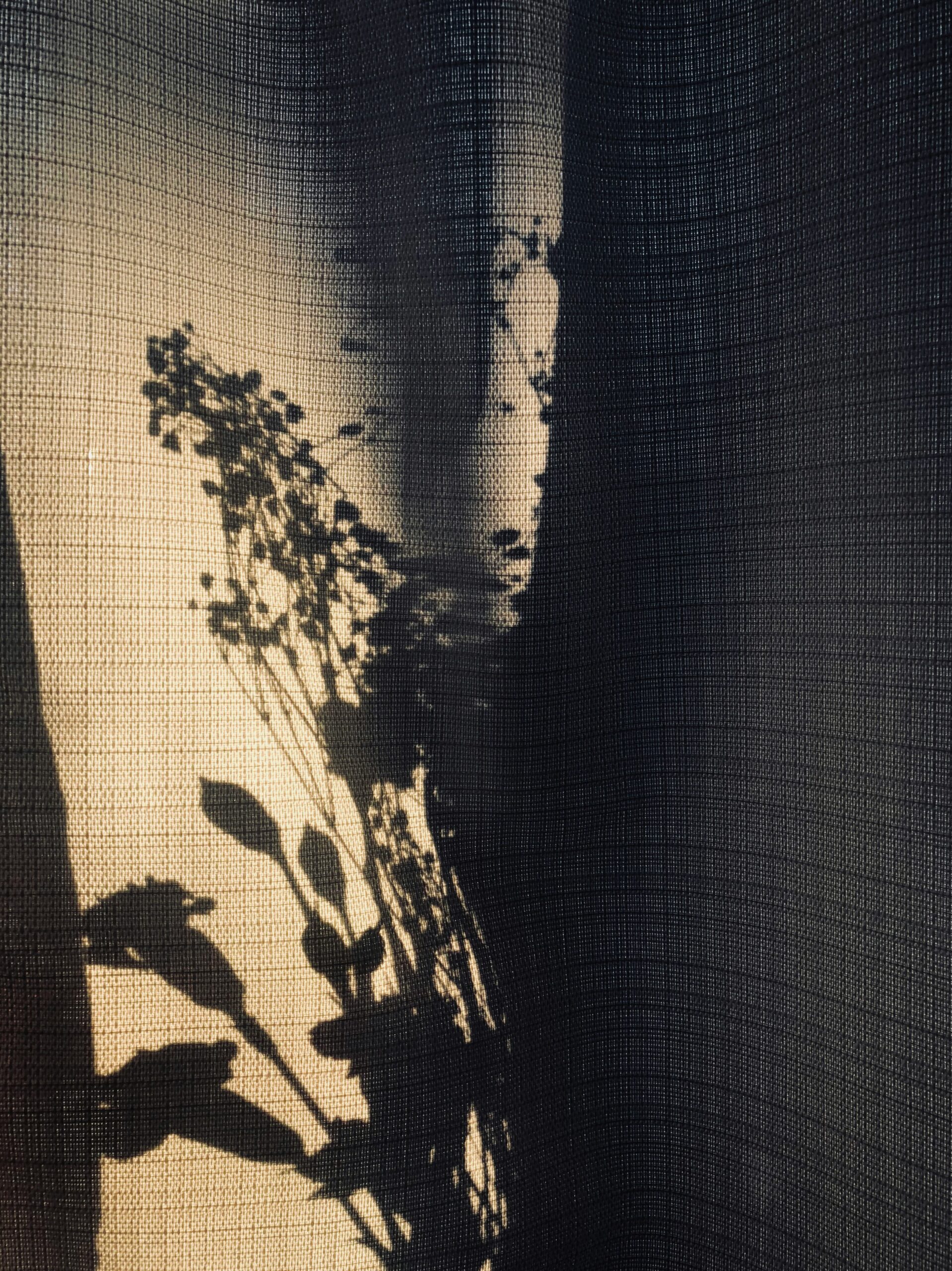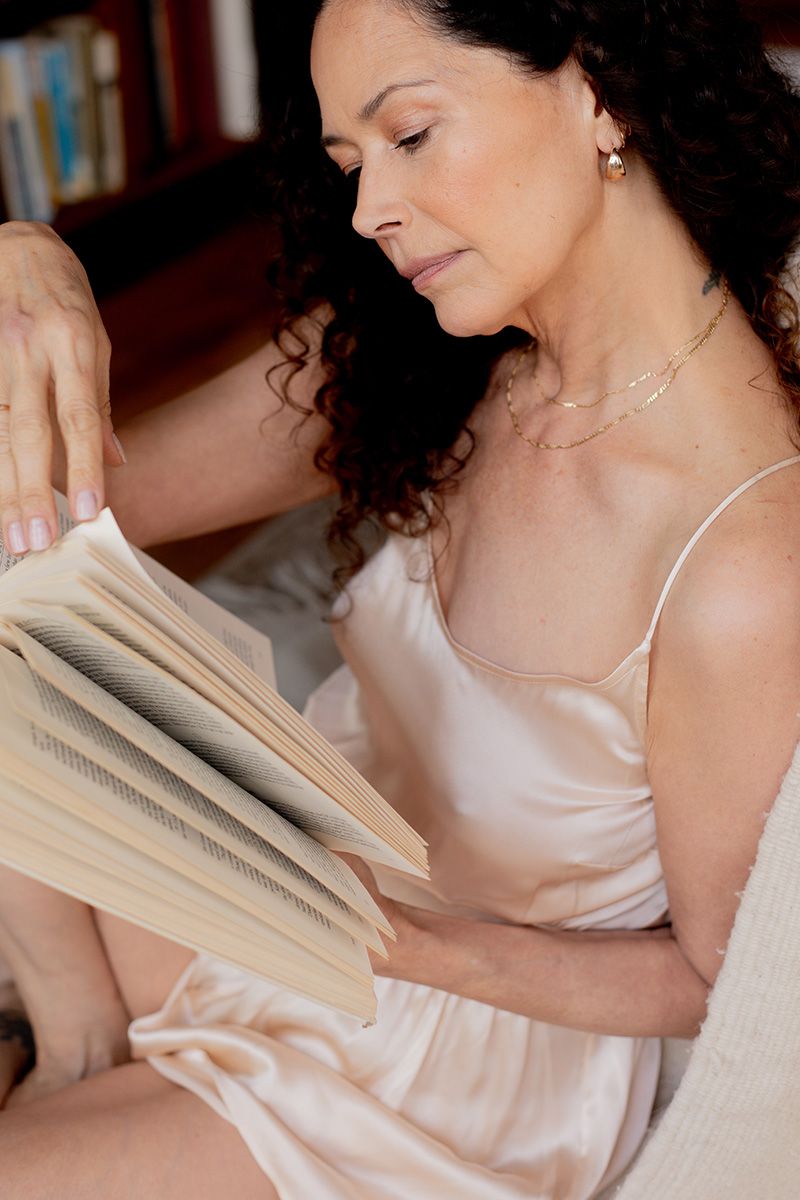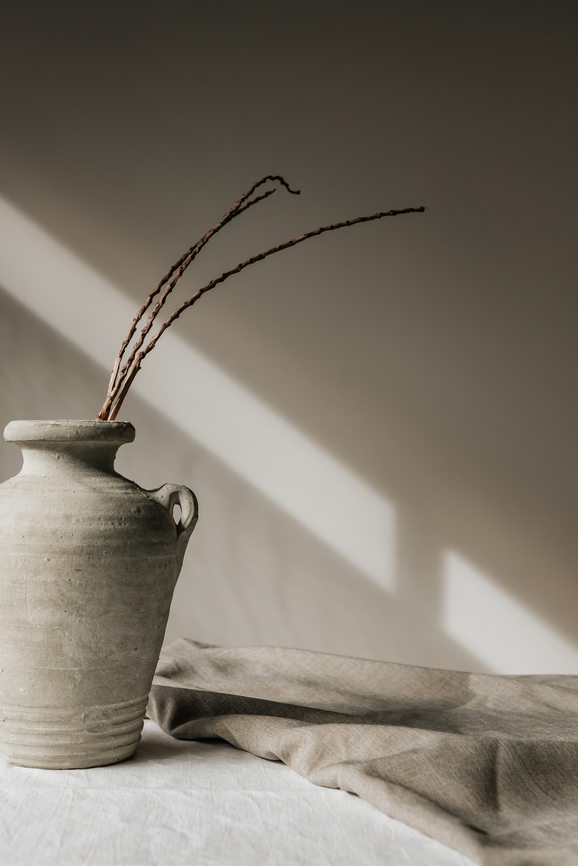
How A House Fire Taught Me To Live With Less
The day the house burned began the way most things do, without anyone knowing it was the beginning.
“It’s the little fires, the domestic losses, that come out of nowhere.”
With larger natural disasters, if one is lucky, there is some fair warning. Weather reports, sirens, signs in the sky. It’s the little fires, the domestic losses, that come out of nowhere. Then again, what would we have done with a warning? Frenzied in the foretaste of trauma, we’d have grabbed the three children, the photo albums, my journals from the last ten years…funny how small the list gets when all you have are two hands and bare minutes in which to act.
The dog would have lived.
As it was, we were at church when it happened, listening to a sermon on what it meant to trust instead of try to control. Thirty-nine weeks pregnant with my fourth child, I remember holding my belly in my tight green dress and thinking about the night before — woodsmoke wafting out of the chimney and mixing with the smell of Virginia woods in the fall. A romantic image of me sitting by the fire in my thrifted Eames leather lounge chair, writing thank you notes from my last baby shower.
We’d spent the past year and a half living nomadically, traveling in our Eurovan, housesitting for British neighbors, even setting up a “home” in 600 square feet on the second floor of my dad’s office building, cooking on an electric hot plate, my two boys (ages 5 and 4) sleeping on an air mattress stuffed under an L-shaped desk, my 2 ½ year old daughter’s “room” — a pack and play inside a storage closet. We’d recently come through a period of upheaval and loss and we had a dream — to live a life that we could come alive in.
“We’d recently come through a period of upheaval and loss and we had a dream — to live a life that we could come alive in.”
We’d started with pursuing a move to Tauranga, New Zealand, then to the Outer Banks of North Carolina, then Colorado…but no doors opened, no jobs appeared. So we’d returned full circle back to where we began — to a gravel road buried in the woods of Virginia, less than a mile from the house I grew up in. After so long living in other people’s spaces, tensely waiting for the call that would launch us into our new “alive life,” I felt myself thawing, settling, savoring the process of making a home.
I rolled up onesies and stacked them in wicker baskets, pinned my high school pointe shoes to the wall in my daughter’s room, something I’d dreamed about doing since I was a 15-year-old wondering if I would ever have a daughter, let alone one who would care that her mother danced ballet.
The 100-year-old farmhouse was small, requiring me to be intentional about what I chose to keep. It all had to pass the William Morris test: Only keep the purposeful and beautiful. Everything else can go. Before there was ever a Marie Kondo method, I intuitively touched each object, noticed what emotion came up (repulsion, delight, boredom, neutrality), and only if I felt delight did I ask that thing in what room and where it wanted to be placed: “What kind of life do you want to live?”
“This meant that when the fire swept through our home, everything I loved the most was exactly what I lost.”
This meant that when the fire swept through our home, everything I loved the most was exactly what I lost. Plus, I knew what I lost — there were no years of accumulation or “what if”s. Living nomadically for a year and a half had taught me how little I needed to feel like I had enough.
We got back to our road about 30 minutes after the fire had been extinguished. Finding the way blocked by firetrucks and neighbors standing in their yards, we asked what was on fire, and they told us it was the house with the huge beech tree in the front — our house. I remember pulling over and realizing that likely everything I had left existed inside my minivan — my kids, that’s all that mattered…and then the wonder of things I’d so recently taken for granted: my purse with my favorite lipstick, a good pen, my latest journal, a box of Kleenex, a water bottle, whatever treasures were stuffed inside the seat cracks.
Exhausted firefighters lined the edges of the road as I ran by with my massive belly, heading for the disaster, not away, like a buffalo into the storm. I expected to find a pile of ash but the house was standing, a corpse with blackened eyes, melted soffit hanging down like peeling skin. I asked if I could go inside. I wanted to feel the devastation, let it ricochet through me, let myself take in the face of what I had lost, bear witness to the dying of the dream. My flat-heeled boots crunching the remains of matchbox cars and baby dolls, I walked the whole property in reverent goodbye. I took in the broken-in half dining room table, the torched plants, the six pans of banana bread still sitting on the kitchen counter under dish towels. Was it just last night we’d had friends over for dinner, sat in a circle eating soup while our kids ran around under the stars?
“Our belongings hold energy and memory — they vibrate with the fingerprints of our lives.”
I knew better than to resort to the idea that things are just things. Our belongings hold energy and memory — they vibrate with the fingerprints of our lives. They are entities, companions for the journey, and I needed to let myself mourn without calling myself shallow for being sad about the loss of possessions, without telling myself I should be grateful that it wasn’t worse. Belongings also represent time, such a finite resource —like the countless hours I’d spent away from my children learning how to custom frame art that I proudly hung on my walls, art that was now burnt or ruined. I mourned the moments I could not redo, with nothing tangible to show for them now but a memory, a story— a suddenly useless and unjust barter. A line from Johnny Cash’s song “Hurt” ran through my mind: “You can have it all, my empire of dirt.” How quickly the proof of our living can turn to ash.
“A huge dumpster sat under our beech tree, indiscriminately collecting the scarred remains of what we’d called our life.
The house reeked of toxins, proving one inarguable truth: synthetic, factory-made things, things without the breath of life, removed so far from the natural world, cannot survive nature. The juxtaposition of home goods made this obvious. My plastic tupperware melted into toxic goo while my collection of pottery, blackened with soot, as if remembering where they came from, stood in solemn witness on the shelves. I learned later that the beams of our house, hewn by hand over a hundred years ago, were so thick (double the thickness of beams used in modern construction) they actually self-extinguished.
SERVPRO came a few days later, in a lime green truck bearing the inept slogan: “As if it never happened,” to catalog the depreciated value of all our things. They surveyed everything down to the half-used toothpaste and the stained saucepan, onto a clipboard spreadsheet, forcing us to consider if we wanted to pay money from our minimal renter’s insurance policy to “save” an item. To have what was left reduced to deficit numbers, to yet again ask each thing, “What kind of life do you want to live?” while a huge dumpster sat under our beech tree, indiscriminately collecting the scarred remains of what we’d called our life.
At that point, all I cared about was trying not to have a baby until I had a home for the baby to come home to.
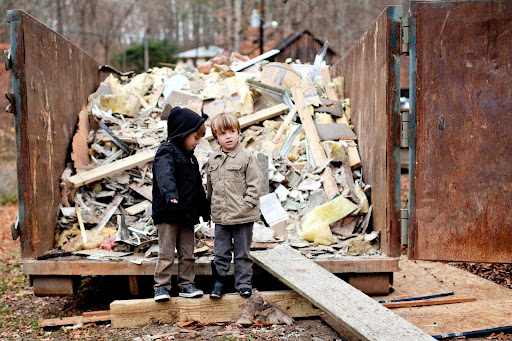
We’d heard burying clothes in the earth can remove the smell of smoke so we dug holes in a corner of my parent’s yard, buried a flannel given to my partner by his mother before she died, buried his wedding tie, buried the robe I’d worn after I gave birth to my three children.
In the aftermath of the fire, I experienced what Robin Wall Kimmerer calls “gift economy.” She writes, “Conceiving of something as a gift changes your relationship to it in a profound way […] A wooly knit hat that you purchase at the store will keep you warm regardless of its origin, but if it was hand knit by your favorite auntie, then you are in relationship to that “thing” in a very different way […] You’re likely to take much better care of the gift hat than the commodity hat, because it is knit of relationships.”
After the fire, each belonging I had was knit of relationships. Every thing was a person, a story of kindness, with a history and a human it had moved through before it ever came to me. I was surrounded by objects of love, from the trashbags of clothes left every day at the front door of our temporary housing, to an entire pantry replacement of spices and dried goods bought by a community group at our church, to the stuffed animals donated to my kids from my partner’s low-income high school students, many of whom were attending school and working jobs at the same time to support their families.
It’s been twelve years and I live marked, branded by the searing iron of loss, just as I promised I would to everyone who helped me through that time. I told them I would live, and love, differently — and I do. I live as if what I own is on loan. I regularly ask my belongings if they’ve served their time with me, if they’d like to go live with someone else, especially when I know someone is hurting. If something I own causes me any kind of distress, any thought of “I should” or “Why haven’t I?” then I let it go to the next person. I pass things on as a tangible reminder of my love, knowing a gift can be like a buoy in the storm. Like the Indigenous practice of the Honorable Harvest: “Take only what you need and use only what you take,” or the Pacific Northwestern Indigenous tribes practice of Potlatch, where wealth was defined as having enough to give away, I let goods flow through me like leaves on the surface of a creek.
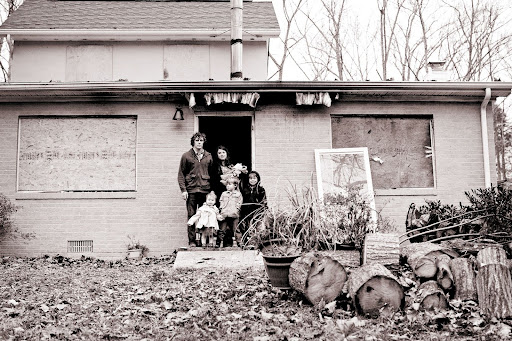
I call it the Manna Principle, from the biblical story of a people who had lost everything, who were forced to wander in the desert for 40 years, not knowing for how long or from where their sustenance would come, who were fed each morning by grain falling from the sky like rain. The wanderers could only gather what they needed for a one-day fill; they had to trust that what they were given was what they needed, and in that act of trusting, they learned it to be true: What they had was enough.
Kimmerer writes, “What would it be like to live with heightened sensitivity to those who gave their lives for ours? Once you start, you find yourself awash in gifts.” I sit in my living room and scan my abundance: the buffalo weaving above my fireplace was a gift from my Grandmother, it is her watching over me; the woven basket from a yard sale is a morning with my mother; the Navajo pottery is my neighbor; the wooden beads on my coffee table are my best friend; even the coffee table, made of copper and wood, is a tree, a metal, the passion of a designer, the skill of a laborer. Each thing I have is a gift from another life.
“I’ve learned to live, not minimally — which is more like a trend, and often a privileged choice — but essentially.”
I’ve learned to live, not minimally — which is more like a trend, and often a privileged choice — but as one friend called it, “essentially.” As she told me, “the fire taught you what mattered. You were taught what lasts.” The word essence means “to be,” or sometimes, “what is.” Essence is a singularity of purpose, a distillation that results in clarity. When everything burns, you’re left with what remains — and it’s always, always the people. The objects that matter matter because they hold memories, and the memories hold the people. It’s the people you would grab, the photos that would prove how much you lived and loved, and maybe the words you found along the way to tell your stories of fire and ash, grief and gratitude.
Trinity Wilbourn is a Denver-based freelance writer, mind/body coach and intuitive guide. As an educational consultant, she works at the intersection of Social Emotional Learning, Mindfulness, and the science of nervous system regulation. In her free time, she can be found hanging with her four kids, spooning her Bernedoodle, singing opera, and dancing in the kitchen. Learn more and explore her offerings at www.trinitywilbourn.com or follow her on Instagram.
